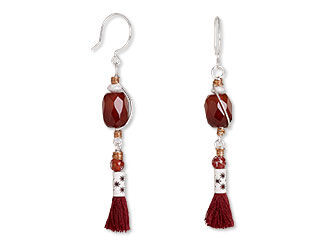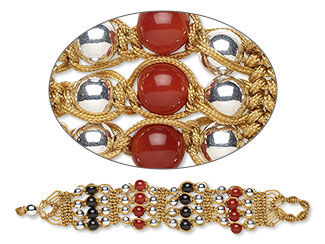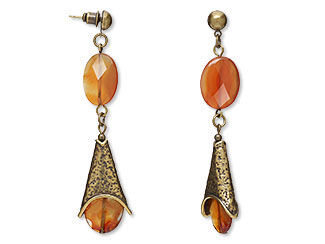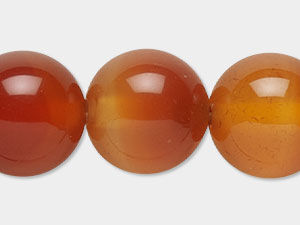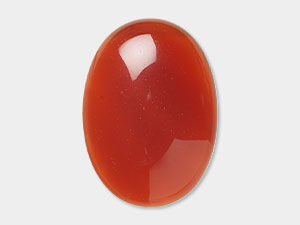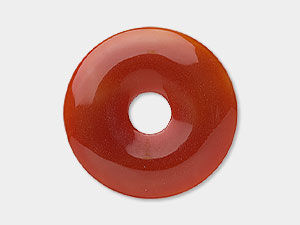Agate, Red Meaning and Properties
Red Agate History
Red agate has a rich history spanning cultures and centuries. The ancient Babylonians used it for seals and amulets, valuing its durability and symbolic power. In ancient Greece and Rome, red agate was prized not only for its beauty but also for its believed healing properties. Chinese culture associated red agate, which they call Nanhong, with good fortune, harmony and balance, often carving the stone with symbols of blessings and happiness for use in jewelry and art. In ancient Egypt, red agate adorned armor and weapons, as it was believed to offer protection in battle. This versatile gemstone remains cherished for its vibrant hues and meaningful heritage.
What are the Metaphysical Properties of Red Agate?
Red agate is a powerful stone associated with courage, strength and protection, symbolizing perseverance and resilience. Red agate meaning is thought to embody a "carpe diem" spirit, inspiring passion, enthusiasm and confidence. Known for fostering emotional balance, red agate is said to provide a sense of security and calm while encouraging forgiveness and compassion. It is also believed to support blood circulation and overall health, making it a stone of healing and vitality. The stone's different shades carry unique meanings: darker reds represent passion, strength and courage, while orange-red agate meaning includes warmth, balance and creativity. Red agate offers a blend of bold energy and grounding harmony, making it both inspiring and versatile.
What Chakra is Red Agate?
Chakras are believed to be energy centers within the body that support both physical vitality and spiritual well-being. Wearing a bracelet adorned with gemstones linked to specific chakras is said to help balance emotions, clarify thoughts and support the body's natural harmony. Red agate is traditionally associated with the root chakra, located at the base of the spine. This grounding chakra is connected to a sense of safety, stability and basic physical needs—such as nourishment, rest and intimacy. Red agate is thought to anchor one’s energy, promoting inner strength, security and a deeper connection to the physical world.
Root Chakra (Muladhara) - Red
- Location: base of spine in the coccyx or tailbone area
- Represents: foundation of self; grounding energy; survival instincts; physical needs (including financial stability); food
- Emotional issues: safety
- Spiritual issues: security
- Physical issues: associated with reproductive system; adrenal system; food or satiety
- Gemstones: bloodstone, garnet, obsidian, red agate, smoky quartz
What is Red Agate Made From?
Red agate is a striking variety of chalcedony, typically displaying shades of red or reddish-brown, often enhanced by fine, intricate banding. These bands were formed by successive flows of slow-moving lava, which deposited layers of silica and quartz over time. The immense weight and pressure from these layers created tubes, pits and pockets in the lower strata, allowing the formation of smooth, rounded shapes as the stone developed. The rich red hue of red agate comes from natural iron compounds within the stone. While red is a natural color for agate, the stone is sometimes dyed to intensify its vibrancy, adding to its eye-catching appeal.
Agate is a gemstone which not only takes a long time to form but is also remarkably stable. Agates are found around the world, including Brazil, India, Yemen, Iran, Uruguay, Mongolia, Morocco, Africa, Madagascar and a range of locations in the United States.
- Mineral Information: Microcrystalline quartz, banded chalcedony
- Chemical Composition: SiO2
- Color: Red to reddish-brown
- Hardness: 6.5 to 7 (Mohs)
- Specific Gravity: 2.58 – 2.64
- Refractive Index: 1.530 – 1.540
How Do You Clean Red Agate?
Red agate is best cleaned using warm, soapy water and a soft cloth. Dry it thoroughly. Do not clean agates using steam, as the stone is sensitive to heat, and avoid using ultrasonic cleaners and harsh chemicals.
Cosmetics and perspiration can negatively affect the surface polish of agate gemstones. Be sure to put agate jewelry on after applying make-up and perfumes, as well as removing it before swimming or engaging in sports.
Store agate jewelry in a separate pouch or box to prevent it from damaging other stones. Do not store in direct sunlight or in a warm location.
Red Agate FAQs
Q: Is red agate naturally red?
A: The crimson tones in red agate are formed naturally, due to the iron compounds in its composition, however sometimes red agate will be dyed to enhance its hue.
Q: What makes red agate different from carnelian?
A: Red agate and carnelian are both forms of chalcedony, a quartz mineral, but they differ in notable ways. Red agate features a broader range of red hues, from deep burgundy and bright reds to orange-red, pink-red and brownish-red tones, while carnelian is known for its consistent bright to medium orange-red color, sometimes with yellow or brown variations. In terms of transparency, red agate can be either translucent or opaque, whereas carnelian is usually translucent, with light passing through its vibrant surface. Red agate typically displays banding, while differences in the methods of formation cause carnelian to lack those patterns. While both are widely available, red agate tends to come in a greater variety of sizes and shapes, making it slightly more abundant.
Q: Do all red agate beads look the same?
A: Red agate displays a wide range of colors—from soft pinks and warm oranges to vivid reds and earthy browns. Its signature banding patterns add to its charm, ensuring that each stone is truly one of a kind.
Q: Is it true that red agate is often heat-treated and what does that mean?
A: Red agate is often heat-treated in order to make the color more vibrant and clearer. Many gemstones are heated to high temperatures to alter their hue, clarity and appearance.
Designing with Red Agate
Red agate’s rich, earthy tones make it an excellent choice for a variety of jewelry designs. Consider using large red agate slices as the focal point in statement necklaces, paired with metallic accents like gold or copper for added warmth. For a more refined look, create men’s accessories such as cuff links or tie tacks featuring polished red agate, adding a touch of bold elegance to formal attire. Its deep hue also makes it a great match for seasonal designs, especially during fall and winter, where it pairs beautifully with amber, burgundy and forest green tones. Lastly, showcase the unique banding of red agate with wire-wrapped pendants, where the intricate patterns of the stone are highlighted with delicate wire details in silver or bronze.
Red Agate Design Inspirations to Get You Started
Red agate is tied to passion, self-love and perseverance, making it an ideal stone for motivated jewelry-makers. Follow along as Patti guides you through the creation of this lovely set of gemstone and tassel earrings.

Shop for Red Agate
**Please note that all metaphysical or healing properties listed are collected from various sources. This information is offered as a service and not meant to treat medical conditions. Fire Mountain Gems and Beads® does not guarantee the validity of any of these statements.
How did you like this resource? Your feedback helps us provide resources that matter to you most.
Copyright Permissions
All works of authorship (articles, videos, tutorials and other creative works) are from the Fire Mountain Gems and Beads® Collection, and permission to copy is granted for non-commercial educational purposes only. All other reproduction requires written permission. For more information, please email copyrightpermission@firemtn.com.

